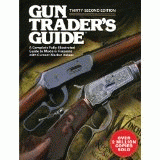The old single-barrel, smoothbore firearm has a little pitting on the steel, and the stock has a few dings.
But what separates it from grandpa's keepsake is the engraving on the part-octagon barrel — “F. Klamberg Indianola Texas” — proving it is from one of the state's settlers and an extremely rare firearm.
Only two exist that are known to have come from Indianola, Texas' second-busiest port in the mid-1800s until it was hit by a hurricane in 1875 and wiped out by another in 1886, leaving few artifacts behind.
The firearm, which could be used as a shotgun or to fire a round ball, is part of the Indianola collection donated to the Witte Museum by Donald and Louise Yena. The collection also includes:
A stamp from Woodward Brothers Merchants
A locket with a woman's photograph and the inscription C.W. Short
A photograph of Freidrich Klamberg, the firearm's owner, dated Aug. 21, 1868
Documents illustrating everyday transactions, including a ledger from merchant B.W. Varnell; a receipt for Isaac Brower dated Dec. 12, 1865; a brand certificate for William King dated July 9, 1875; and a memo from Tres Palacios Packing House dated June 6, 1876.
And, although not from Indianola, a leather gun bag and powder horn from the period to go with the gun.
“There are other firearms that can be documented to Texas settlers, but not many,” Shackelford said.
Before the Yena donation, the only Indianola artifacts at the Witte were a few documents.
“We're just thrilled to get anything like this,” Shackelford said. “Anything we can get from Indianola is important because it was the landing place for so many European immigrants.”
Donald Yena, a renowned Western artist and collector of 1800s Texas artifacts, described the gun as “the centerpiece in our collection for 22 years.”
“When you find a gun from a Texas settler with his name on it, that's the holy grail,” he said.
The firearm, a smooth-bore 20-gauge muzzle loader, probably was brought by Klamberg from Germany in the early 1850s, Yena said. A gunsmith and jeweler, Klamberg was headed to New Braunfels but stayed in the bustling port of Indianola, where he set up shop before moving to Victoria.
It is the best of the two Klamberg firearms known to exist, Yena said.
Originally a flintlock, the gun was converted to the era's cutting-edge technology, a percussion firing system.
The walnut stock shows fine hand checkering on the pistol grip and forearm, which is slightly worn from use. The original wooden ramrod tucks neatly below the barrel.
“You can tell this was a prized possession by the way Klamberg took care of it,” Yena said. “There is quite a bit of bluing left. The gun is in remarkable condition for a firearm of its type.”
The Yenas have a long relationship with the Witte.
In 1994, the museum purchased the Donald M. and Louise Yena Collection of more than 2,000 Texas artifacts ranging from firearms, saddles and gambling paraphernalia to kitchenware.
Items from the Yena collection are displayed in exhibits such as the current “1910: A Revolution Across Borders,” marking the centennial of the Mexican Revolution.
“Don Yena: Painting the South Texas History,” an exhibit of a dozen 36-by-60-inch oil paintings depicting turning points of the cattle industry, was displayed in the fall of 2009 and extended through the summer of 2010 by popular demand.
“Don and Louise Yena are part of the Witte's extended family of people passionate about the historic stories of South Texas,” said Witte President and CEO Marise McDermott.
The focus of the Yenas' collecting parallels the Witte's efforts to illustrate the history of South Texas, from Spanish colonial vaqueros to the ranching, farming and mercantile industries through the 1800s, McDermott said.
“We're very grateful of their lending and generosity — and their research. They've really helped us,” she said. “The Indianola story is the story of a town that disappeared.
“To have the ensemble of artifacts that the Yenas contributed helps reveal a hidden history.”
While there are no plans to display the Indianola artifacts, they may play into the opening exhibits of the Witte's South Texas Heritage Center, incorporating Pioneer Hall with an expansion to some 20,000 square feet, in the spring of 2012.
John Goodspeed is a freelance writer and photographer. E-mail him at john@johngoodspeed.com
